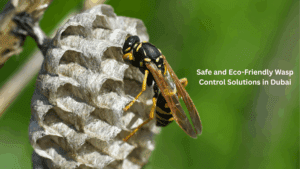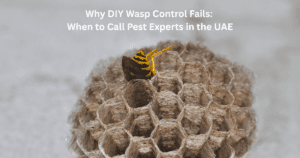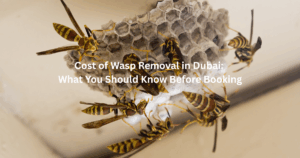Understanding Bees: Life Cycle, Species And Powerful Prevention Strategies
Bees serve an essential role within our ecosystem, contributing to pollination and the preservation of biodiversity. However, their establishment of hives in or adjacent to residential areas may present safety concerns. Understanding the life cycle of bees, their species and appropriate strategies for preventing infestations is essential for coexisting harmoniously with these beneficial insects.
This guide aims to equip individuals with the necessary knowledge to make informed decisions while prioritizing safety for humans and bees.
The Life Cycle of Bees
Bees undergo a comprehensive metamorphosis comprising four distinct stages:
- Egg Stage
A queen bee deposits eggs within the cells of honeycombs. These eggs are diminutive, measuring approximately 1 to 1.5 mm in length. Following an incubation period of around three days, the eggs hatch into larvae.
- Larva Stage
The larval stage represents a period of rapid growth during which the young bees are initially nourished with royal jelly, followed by a diet of honey and pollen. Worker bees provide sustenance to the larvae nearly 1,000 times daily, facilitating their swift development.
- Pupa Stage
During the pupa stage, larvae undergo significant morphological changes, developing distinct features such as wings, legs, and compound eyes. The anatomical structure of the organism increasingly mirrors that of an adult bee.
- Adult Stage
Fully developed bees emerge as either workers, drones, or new queens. Worker bees assume various responsibilities within the hive, drones contribute to the reproductive processes, and the queen perpetuates the lifecycle by laying thousands of eggs throughout her lifespan.
Types of Bees
With over 25,000 bee species identified globally, the following are among the most commonly encountered:
- Honey Bees (Apis mellifera)
Honey bees are essential for pollination and the production of honey. While generally non-aggressive, they defend their hive if they perceive a threat. These bees organize themselves into structured colonies of a queen, drones, and worker bees.
- Bumble Bees (Bombus spp.)
Bumble bees are known for their exceptional pollination capabilities, thriving in flower-rich environments. They inhabit small underground colonies. Although they can sting multiple times, they typically do so only in response to provocation.
- Carpenter Bees (Xylocopa spp.)
Carpenter bees are characterized by their large, blue-black bodies and are known to nest in wood. They may cause structural damage to wooden furniture and buildings. While these bees do not produce honey, they contribute significantly to pollination.
- Killer Bees (Africanized Honey Bees)
Killer bees exhibit greater aggression compared to their non-Africanized counterparts. Typically, they nest near water bodies or dense vegetation and attack in large swarms when provoked.
- Wasps and Hornets (Non-True Bees)
Frequently mistaken for bees, wasps and hornets are generally more aggressive. They construct nests resembling paper, which can be found in trees, attics, or wall cavities. Unlike honey bees, these insects possess the ability to sting multiple times.
This overview encapsulates the diversity of bee species and highlights their ecological significance alongside safety considerations regarding human interaction.
Preventing Bee Infestations
While bees play a crucial role in our ecosystem, unwanted infestations near residential properties can present safety hazards. The following strategies are recommended for effective prevention:
- Identify and Seal Entry Points
Bees often access homes through tiny openings in walls, attics, and vents. Regular inspections and sealing of these entry points are recommended to prevent potential nesting.
- Remove Food Sources
Bees are attracted to sweet and floral odours. It is prudent to avoid leaving sugary beverages, fruits, or open food outdoors, particularly during the warmer months.
- Maintain Your Yard
Trim overgrown vegetation to reduce nesting areas and store woodpiles properly to prevent carpenter bee infestations. Add bee-repelling plants like citronella, eucalyptus, and mint to your landscape.
- Utilize Bee Repellents
Natural repellents, including cinnamon, garlic, and vinegar sprays, can effectively deter bees from nesting in undesired locations. However, it is vital to use these substances judiciously to avoid negatively impacting beneficial pollinators.
- Install Protective Screens
Using mesh screens on windows, vents, and chimneys will prevent bees from entering homes while allowing adequate ventilation.
- Relocate Beehives Professionally
If you spot a beehive near your home, admire its beauty and avoid disturbing it. Instead, contact a licensed beekeeper or pest control service for safe relocation.
- Address Existing Infestations Promptly
If bees are found inside walls or ceilings, do not seal the entry point immediately. Trapped bees might look for other escape routes within the structure. It is advisable to engage pest control professionals to facilitate the removal of aggressive species, such as Africanized bees or wasps, in a manner that ensures safety and efficiency.
Conclusion
Bees are a fundamental part of our ecosystem, contributing to pollination and biodiversity. However, infestations near homes and businesses can be hazardous. By understanding their lifecycle, species, and prevention methods, we can make informed decisions that ensure safety while preserving these essential pollinators. If you suspect a bee infestation, always seek expert assistance, like Alpha Arabian Pest Control Service, to manage the situation responsibly.






